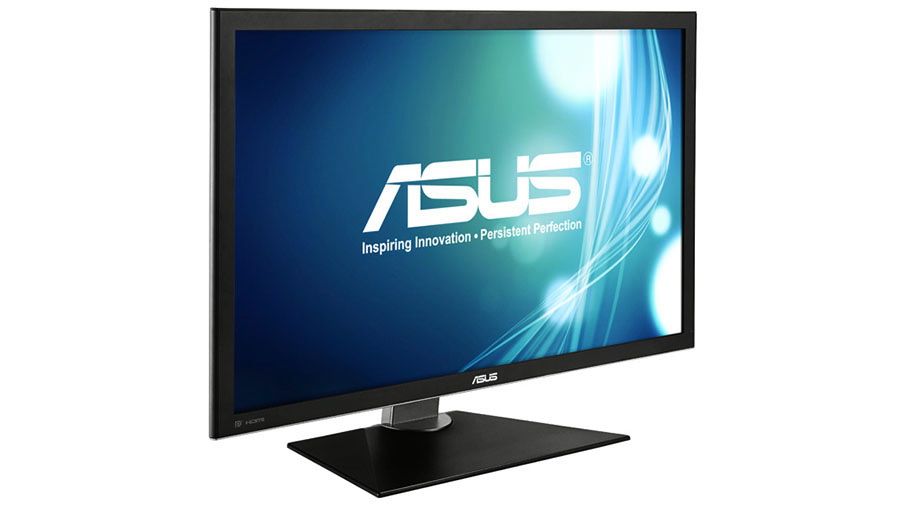Step aside 3D: 4K actually delivers in movies and games
4K is here and you'll need a PC to really enjoy it

Be gone stereoscopic 3D. There's a new video format that actually delivers on the hype. It's 4K ultra-HD. It's fugging fabulous. And the desktop PC is the first device to really make use of the full benefits of 4K.
For the record, 4K refers to a new standard of screen technology that sports roughly 4,000 horizontal pixels. The specific number varies as does the horizontal pixel count, but that's going to be somewhere north of 2,000 pixels.
To put that into context, full-HD 1080p sports 1,920 horizontal pixels and 1,080 vertical pixels, the latter metric being analogous to the old "scan line" standard for video, hence the name 1080p for 1,080 progressive scan lines.
Advanced mathematics
Do the maths and you end up with a screen sporting fully four times the resolution of full-HD. As it happens, this "four times" measure has been the source of some confusion. After all, the raw numbers only look like a doubling of the horizontal and vertical pixels of a 1080p panel.
But we are, of course, talking about a geometric squaring of the pixel grid. If in doubt, try this way of looking at it.
The first 4K PC monitor I've experienced is the Asus PQ321Q. It actually sports a 3,840 by 2,160 grid. Imagine you have than in front of you right now. Then grab hold of an imaginary 1,920 by 1,080 full-HD pixel grid and super impose it top left on the Asus's 3,840 by 2,160 panel.
It'll stretch half way across and half way down. Precisely one quarter of the screen is covered. Then stick another 1,920 by 1,080 grid immediately to the right. You've covered half the screen.
Get daily insight, inspiration and deals in your inbox
Sign up for breaking news, reviews, opinion, top tech deals, and more.
The penny drops...
You can see where this is going. Add two more below, and – bang! - four 1080p grids, four times the resolution. To pinch a Blackadder-ism, even the ape creatures of the Indus have grasped this. And yet some question the 4x claim.
Anywho, back to the comparison with stereoscopic 3D technology and 4K visuals. Stereoscopic 3D usually doesn't work very well. When it does work, it's often uncomfortable and unpleasant due to the use of clunky tech like specialised glasses.
It also fools your eyes into thinking they're viewing things arranged at varied distances while at the same time expecting them to maintain static focus on a fixed screen surface. Even without glasses, that's always going to cause eye strain.
4K suffers none of these issues. It's essentially existing technology made a hell of a lot better. Four times better. It's most dramatic when watching video content. It's a bit like watching a fully animated image from a high-end digital camera. It's that crisp, that sharp.
Retina writ large
Actually, it's better than that. Because the pixels are so small and dense, they essentially disappear. Just like they do on a smartphone or tablet with a so-called 'retina' display. Except with the Asus PQ321Q we're not talking about a piffling four to 10 inches.
We're talking 31.5 inches of epic visual glory. In fact, the end result is a lot like looking through a large window into an alternate reality that's somehow sharper, more vibrant than the real world.
The slight snag, of course, is that there's very, very little 4K video content to watch. Happily that's not an issue for games. You just crank up the resolution settings and you're instantly experiencing true 4K visuals.
Admittedly, the effect is actually a bit less dramatic, for me anyway. That's because I'm accustomed to gaming at 2,560 by 1,600, which is half the resolution of 4K rather than merely one quarter as per 1080p video. But 4K gaming still looks stunning.
The extra pixels aren't half handy for desktop space in terms of general computing, too. Likewise that Asus panel has other things going for it. Its inherent image quality, things like contrast and viewing angles, are absolutely super.
The price of near-perfection
It has some issues, too. Even two Nvidia Titans, currently the fastest graphics chip you can buy and yours for a cool £700 each, can't truly cope with 4K's eight million pixels.
Similarly, only a DisplayPort interface is capable of handling it over a single cable at the 60Hz refresh you really need to run, and even then only in a special mode that can cause issues with system booting. Then there's the minor matter of the £3,000 pounds you'll need to buy such a screen.
Obviously, that simply can't be justified in normal value terms. But I honestly don't, especially when £3,000 is the starting price. It will only come down. Just one word of warning. Avoid looking at a 4K monitor unless you are in the position to buy. It will make whatever you're currently using look completely pedestrian.
If you want to read more about the 4K experience and the Asus PQ321Q, grab a copy of next month's edition of PC Format magazine with my full hands-on and more detailed thoughts.
Technology and cars. Increasingly the twain shall meet. Which is handy, because Jeremy (Twitter) is addicted to both. Long-time tech journalist, former editor of iCar magazine and incumbent car guru for T3 magazine, Jeremy reckons in-car technology is about to go thermonuclear. No, not exploding cars. That would be silly. And dangerous. But rather an explosive period of unprecedented innovation. Enjoy the ride.